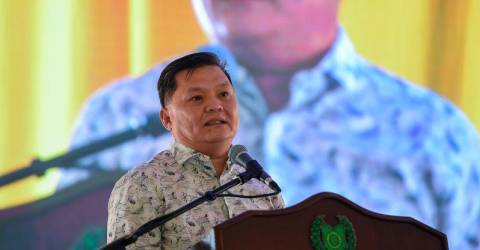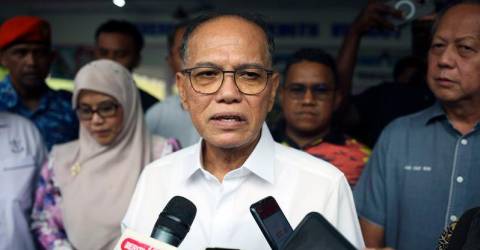ADVERTISE HERE

Abang Johari gives a speech after the briefings.
BINTULU (May 23): An estimated US$460 billion (RM2,157 billion) in investment and spending is expected to be injected into Sarawak’s economy until 2050 to realise the proposed Sarawak New Energy Hub (SNEH) project here, said Premier Datuk Patinggi Tan Sri Abang Johari Tun Openg.
In a post on his official Facebook page Sarawakku, the Premier said the amount would include investment by both the government and private sector through equity participation, following a briefing on the proposal by Samsung E & A Corporation in Seoul yesterday.
The Premier and members of his delegation arrived in Seoul on Monday night for a two-day working visit.
“The park to be chiefly driven by hydropower from its dams would produce renewable energy sources primarily hydrogen and ammonia that would be exported to other countries in the region, particularly Korea,” he said.
The briefing included the review of the H2biscus hydrogen project, of which the stakeholders are Samsung E & A, LOTTE Chemical Corporation, Korean National Oil Corporation (KNOC), and Sarawak through SEDC Energy, a subsidiary of the Sarawak Economic Development Corporation (SEDC).
Abang Johari said three and a half years since the signing of the memorandum of understanding (MoU) between the parties, the H2biscus hydrogen project in Bintulu that would become a part of the SNEH project, was progressing well despite a few issues that needed to be ironed out by the investors and Sarawak government.
Earlier, SEDC Energy chief executive officer Robert Hardin signed a Joint Development Agreement (JDA) for the H2biscus project.
Samsung Engineering will execute the FEED (Front End Engineering Design) for the green hydrogen plant with an annual capacity of 150,000 tons and a green ammonia conversion plant with a capacity of 850,000 tonnes.
Samsung E&A executive vice-president Park Cheon Hong then briefed the Premier and other attendees on the SNEH project proposal.
In his address after the briefings, Abang Johari reiterated that Sarawak would expand its power generation to 10GW by 2030 to meet the accelerated demand, especially for renewable power.
“The huge demand for green power in Sarawak is amplified by the power needs of up to 1.3GW for the SNEH project,” he added.
He pointed out that European Union (EU) countries had also expressed their desire to collaborate with Sarawak in the renewable energy space during the recent visit of EU ambassadors to Kuching.
“The EU countries had indicated that they would consider setting up the EU bank in Sarawak to provide a source of funding for green investments in the state,” he said.
Among those accompanying the Premier were the Minister of Utility and Telecommunication Dato Sri Julaihi Narawi, Deputy Minister of Energy and Environmental Sustainability Datuk Dr Hazland Abang Hipni, and SEDC chairman Tan Sri Datuk Amar Abdul Aziz Husain.

 1 year ago
176
1 year ago
176



 English (US) ·
English (US) ·